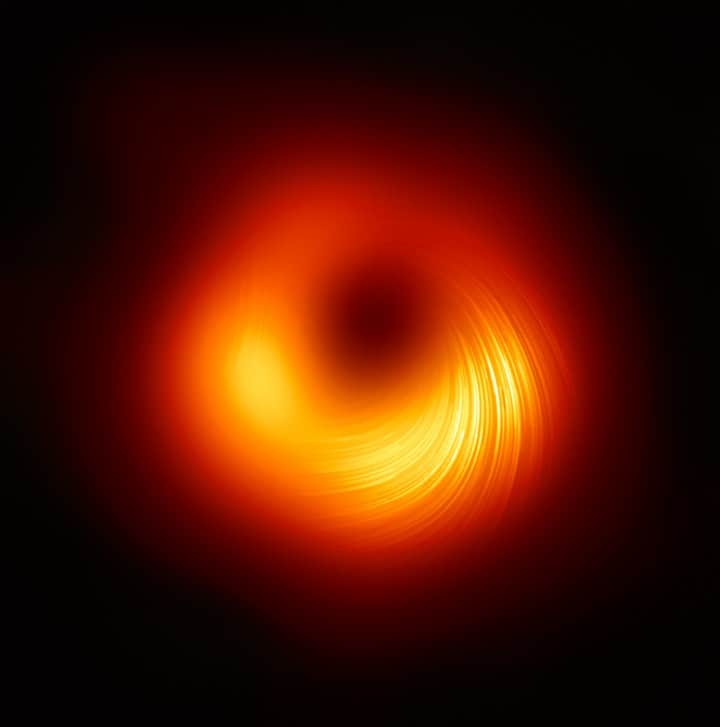Researchers unveil new image of black hole that they will help unlock its mysteries
Published March 24, 2021 at 6:03 pm

A team of international scientists that includes a Canadian researcher has released a more detailed image of a black hole.
The Perimeter Institute for Theoretical Physics in Waterloo, Ont., says the new image shows the “crisp swirl” of light around the black hole as it appears in polarized light.
The institute’s Avery Broderick says the polarized light allows researchers to learn more about the magnetic fields surrounding the black hole in the M87 galaxy.
They believe the new image will further help its understanding of how magnetic fields allow the black hole to “eat” matter and eject powerful energetic jets.
Two years ago the Event Horizon Telescope (EHT) Collaboration team released the first image of a black hole.
The international collaboration is composed of more than 300 researchers who compiled the image from eight Earth-based telescopes positioned around the world.
The new image is part of two papers published Wednesday in The Astrophysical Journal.
“When the EHT is looking at polarization in astronomical sources, we’re really looking for information about the structure of magnetic fields,” said Broderick, who is also a professor at the University of Waterloo.
Broderick said he helped devise the techniques that allowed the team to capture the polarized light.
The researchers said it took two years to compile the image.
“The newly published polarized images are key to understanding how the magnetic field allows the black hole to ‘eat’ matter and launch powerful jets,” said Andrew Chael, part of the team and a NASA Hubble Fellow at the Princeton Centre for Theoretical Science.
The image researchers captured is not of the black hole closest to Earth, however, but of one at the centre of neighbouring galaxy Messier 87 that was easier to observe by telescope. It is about six billion times the mass of our sun and located about 53 million light-years from Earth. One light-year is equal to 9.5 trillion kilometres.
The Canadian Press
insauga's Editorial Standards and Policies advertising





